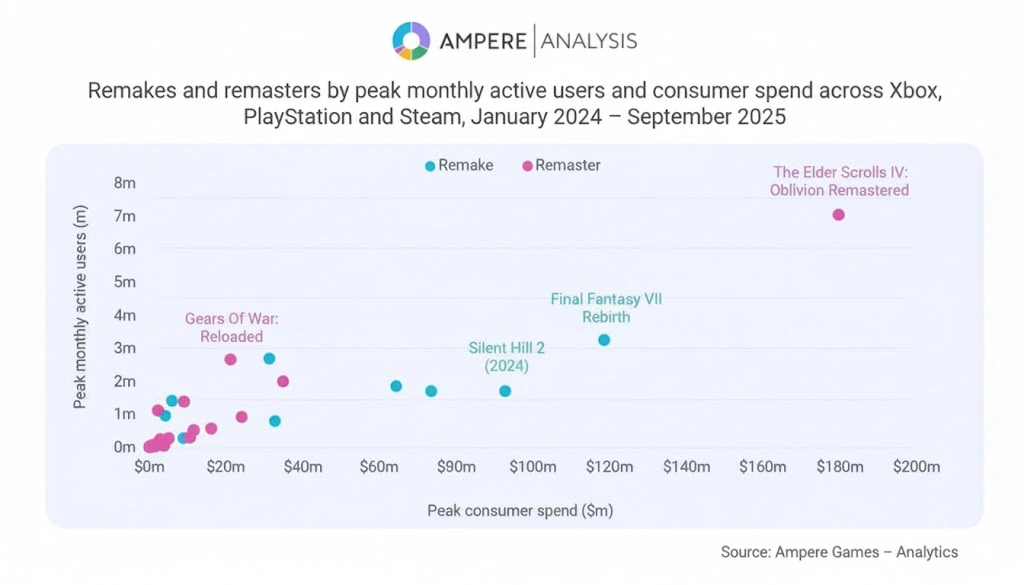New data reveals a striking trend in the gaming industry: consumers are spending more than twice as much on remakes than on remasters over the last two years.
The firm’s analysis of titles released between January 2024 and September 2025 shows that across 42 games (15 remakes and 27 remasters) the average remake generated about 2.2-times the revenue of an average remaster.
According to Ampere Analysis, remakes and remasters in that period drew around 72.4 million players across major platforms such as PlayStation, Xbox, and Steam, with total consumer spending—including full game purchases and microtransactions—reaching roughly $1.4 billion.

The report highlights key differences between remakes and remasters. Remakes are defined as full-rebuilds of older titles with deeper changes—new engines, updated mechanics, expanded content—whereas remasters typically upgrade visuals, performance, and sometimes add minor features while retaining the core game.
One standout example from Ampere’s dataset is The Elder Scrolls IV: Oblivion Remastered, which reached a peak of $180 million in consumer spending and amassed about 7 million monthly active users across platforms. Despite being a remaster, it performed strongly due to the strength of its franchise and faithful execution.
However, Ampere emphasises that while remakes have higher engagement and spend per release, they also carry a much higher cost in development, marketing, and time. As analyst Katie Holt put it,
‟Remakes can rejuvenate classic IP and attract new audiences, but they require substantially higher investment… Remasters offer faster turnaround and lower cost—but generally deliver less engagement.”
From a business perspective, this data points to a strategic cross-roads for publishers. With game development budgets soaring, IP owners are increasingly mining their back-catalogues for opportunities that balance risk with reward.

Choosing between a remake and a remaster becomes a complex question of expected returns, franchise age, market appetite and platform strategy. The report notes that many companies are asking whether a full-scale remake is justified or whether a modernised remaster may suffice.
For players, the trend is meaningful. Higher-quality remakes often command premium prices and longer lead-times—but also tend to deliver more content, deeper systems, and broader appeal beyond nostalgic players. On the other hand, remasters may arrive quicker and cheaper but may not capture the same level of excitement or fresh audience.
Looking ahead, the industry is watching to see whether the dominance of remakes continues or whether market saturation, rising development costs, and player fatigue may start to shift the balance back toward remasters or entirely new original titles. Either way, the business of reviving old games is no longer just about nostalgia—it’s a major investment bet.
More News:
Grand Theft Auto 5 Lester Says $100 Price Tag Is Justified For GTA 6
DOOM Creator Says Xbox Boss Killed Halo MMO To Protect His Bonus
Rockstar Denies Union Busting After Firing Dozens Of GTA 6 Developers


